Introduction
Saturn is the sixth planet from the sun. Saturn was observed by Galileo in 1610 and is the second largest planet in the Solar System. It is commonly known for its seven rings that surround the planet. Astronomers initially thought that Saturn’s rings were actually moons and were confused when they saw that Earth passed right through these rings. It was not until 1659 that Christiaan Huygens completely understood the makeup of these rings. Saturn is named after the Roman god of agriculture, and the Greek god, Cronos.
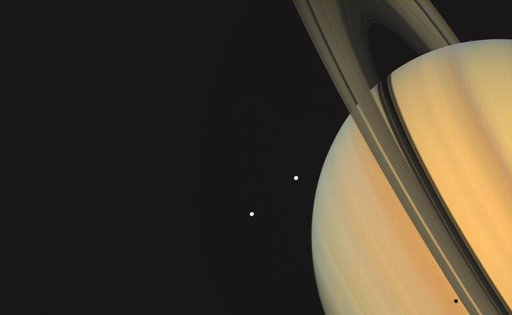
Size & Scale
Saturn is the second largest planet in our solar system. It is so big, it could hold up to 760 Earths, and is 95 times more massive than Earth. Saturn is the farthest planet from the Earth that is visible by the unaided eye.
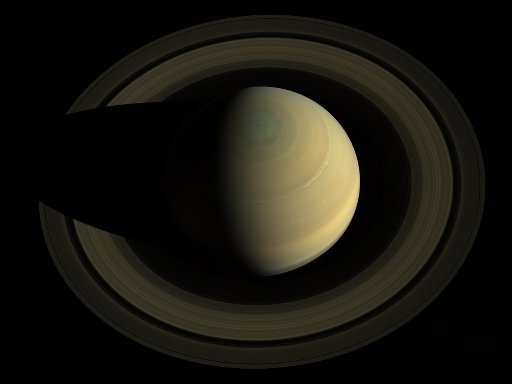
Environment/Terrain
Saturn is the least dense of all the planets, actually to the point that if all the planets were put in water, Saturn would be the only one to float! Saturn also rotates at a very high speed, making a day on Saturn only 10 hours and 32 minutes. This makes the planet appear flattened with one diameter at 33,780 miles and the other at 37,449 miles! In comparison, Earth’s Equator is only larger than the poles by a distance of 13.3 miles. Saturn is protected by a magnetic field 578 times more powerful than Earth’s, and like Jupiter, Saturn is about 75% hydrogen and 25% helium with traces of water, methane, ammonia and "rock.” This composition is similar to that of the Solar Nebula which started the solar system. Ever wonder why Saturn looks like it has gold bands on its surface? It is actually from the heat generated from the core of Saturn combined with high-speed winds of 1100 mph!
Saturn is very well known for its rings. Two prominent rings and one faint ring can even be seen from the Earth! The gap between the first two rings is known as the Cassini division. The much fainter gap is known as the Encke Division. There are also four additional faint rings. Saturn's rings, unlike the rings of the other planets, are very bright. From Earth, the rings look continuous, but they are actually made of innumerable small particles that each have independent orbits. They range in size from just a few inches, to miles across in diameter! Even with these variety of objects, the rings are actually very thin, with a total width of around a mile! Despite their impressive appearance, there's really very little material in the rings -- if the rings were compressed into a single region, it would be no more than 62 miles across. The ring particles seem to be composed primarily of ice, but they may also include rocky particles with icy coatings. Voyager confirmed the existence of radial inhomogeneities in the rings that astronomers called "spokes." Astronomers are still unsure how these “spokes” work, but they think it may have something to do with the magnetic field.
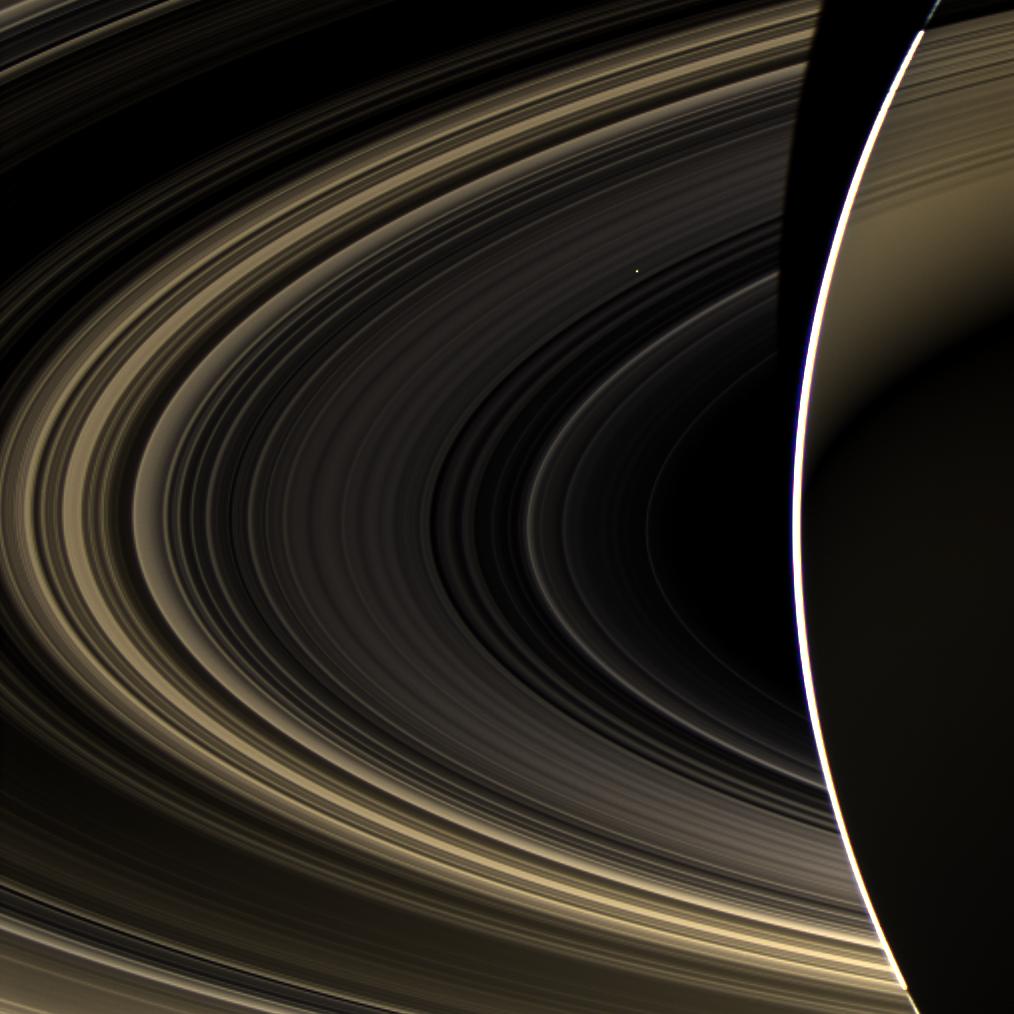
Orbiting Bodies
Saturn has 53 named satellites (as of spring 2010) and 62 moons have been discovered. The three pairs Mimas-Tethys, Enceladus-Dione and Titan-Hyperion have a gravitational interaction that keep them in a stable orbit. There are 9 more that have been discovered but not yet named. Saturn's largest moon, Titan, is slightly larger than Mercury, and is the second-largest moon in the solar system behind Jupiter's moon Ganymede. Titan is covered by a very thick, nitrogen-rich atmosphere that might be like what Earth's was long ago, before life was established. While the Earth's atmosphere extends only about 37 miles into space, Titan's reaches nearly 10 times as far. Titan’s Atmosphere reaches a height of 600m while Earth’s atmosphere varies upon the effect of solar flares which is a range of 60 - 100km. These moons can possess bizarre features. Pan and Atlas are shaped like flying saucers, lapetus has one side as bright as snow and one side as dark as coal, and Enceladus shows evidence of "ice volcanism," spewing out water and other chemicals. A number of these satellites, such as Prometheus and Pandora interact with ring material to keep the rings in their orbits. Enceladus has ice geysers at the southern pole. This means that the core is warm enough to produce liquid water. Where there is water, there could be life.
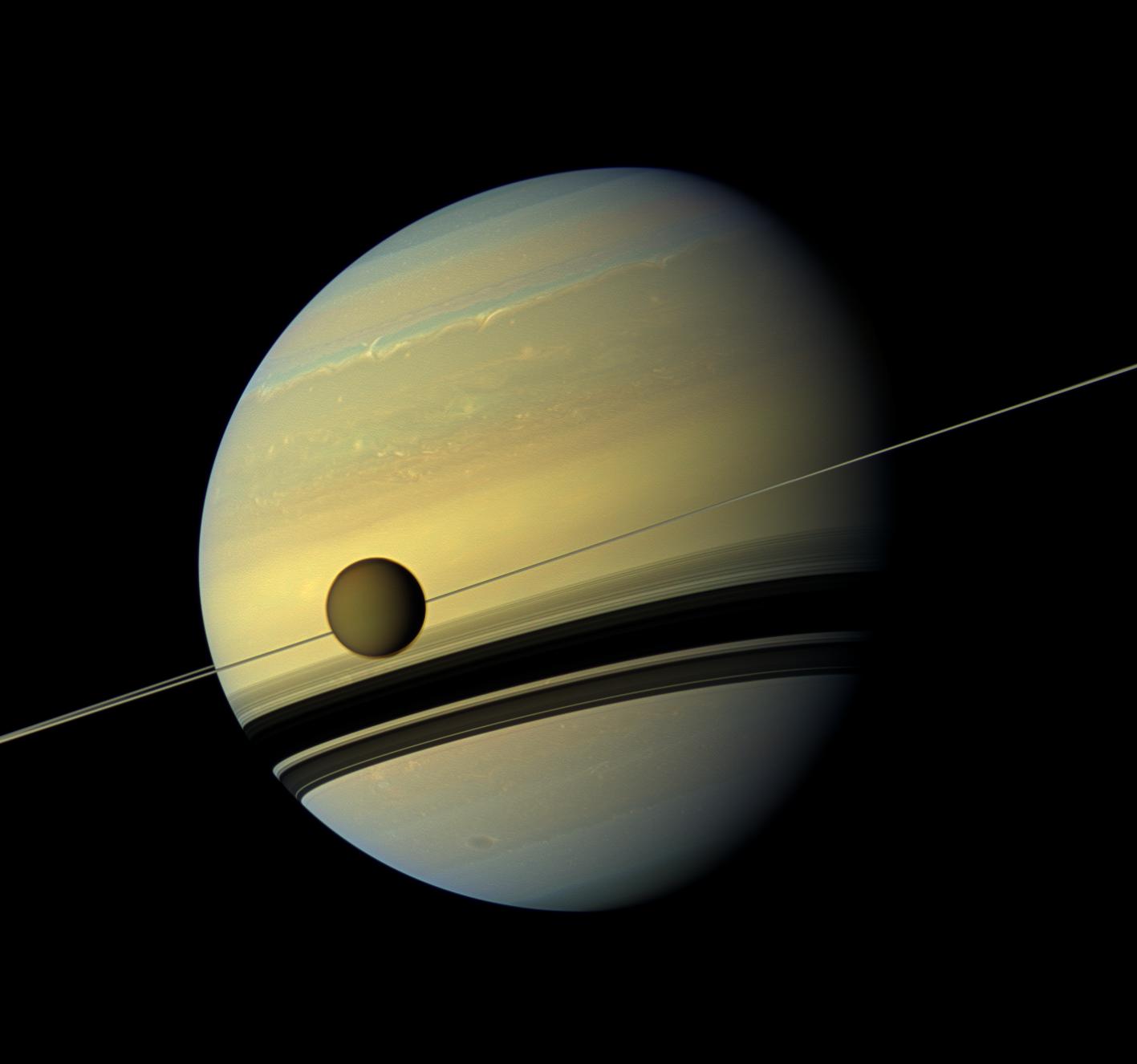
Missions
In 1973, Pioneer 11 was launched on its mission to Saturn, and in 1979, it finally reached its destination as the first spacecraft to ever go to Saturn. It flew within 13,700 miles of Saturn and discovered two of Saturn’s outer rings and the strong magnetic field. In 1980, Voyager I discovered the makeup of the planet’s rings and sent back hundreds of images. In 1981, Voyager 2, whlie on its way to Uranus and Neptune, made flybys of Enceladus, Tethys, Hyperion, Iapetus, and Phoebe. In 2004, the Cassini spacecraft, the largest interplanetary spacecraft ever built, took off for orbit around Saturn. It is a two-story-tall probe that is equivalent in mass to 30 school buses. It studied the moon Enceladus, and carried the Huygens probe that landed on Titan’s surface. It is currently in orbit around Saturn.
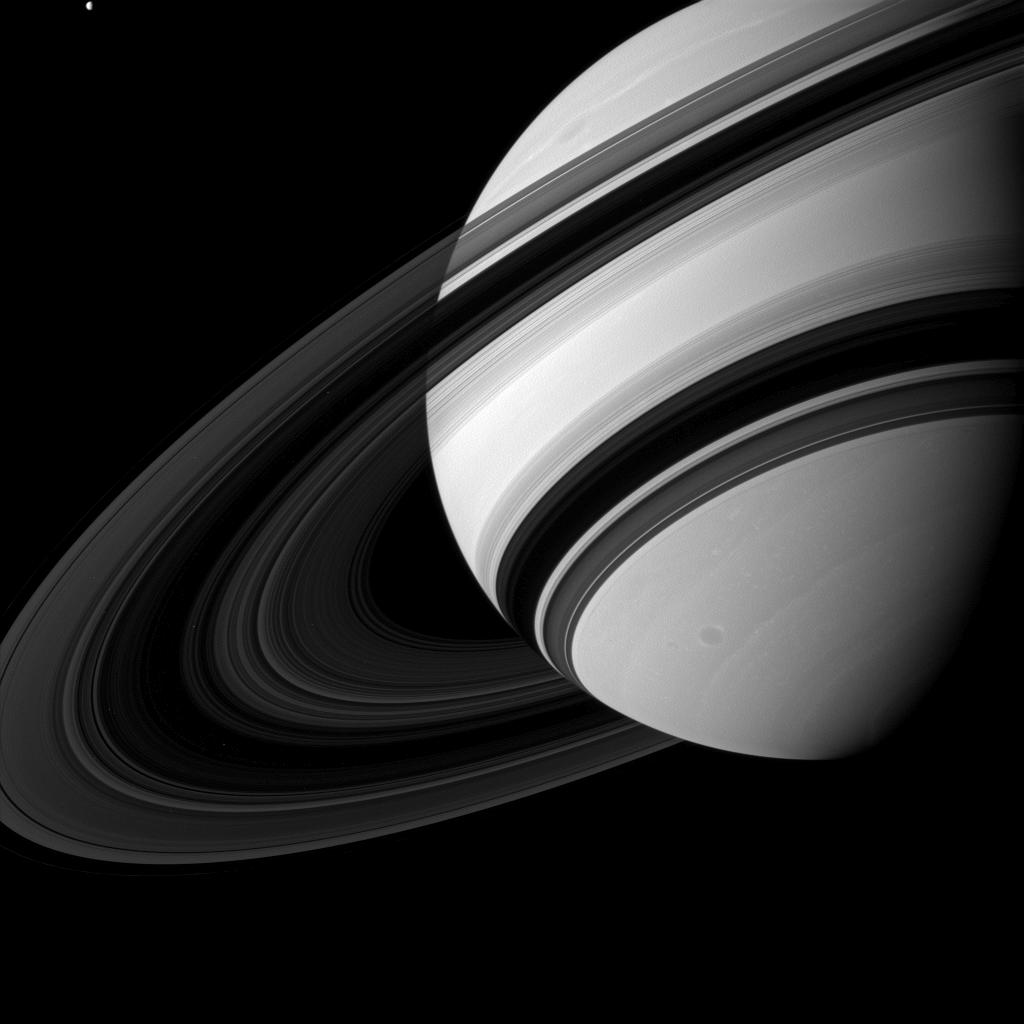
Purdue Connections
Michael J. McCulley (Captain, USN, Ret., BS '70, M.S. '70, Metallurgical Engineering, Purdue University) was the pilot aboard STS-34, Atlantis, October 1989, where the crew successfully deployed the Galileo spacecraft on its six-year journey to Jupiter, where it began its two-year exploration of the planet and its moons. During this mission, the crew also operated the Shuttle Solar Backscatter Ultraviolet Instrument (SSBUV) to map atmospheric ozone. He has logged a total of 119 hours and 41 minutes in space.
